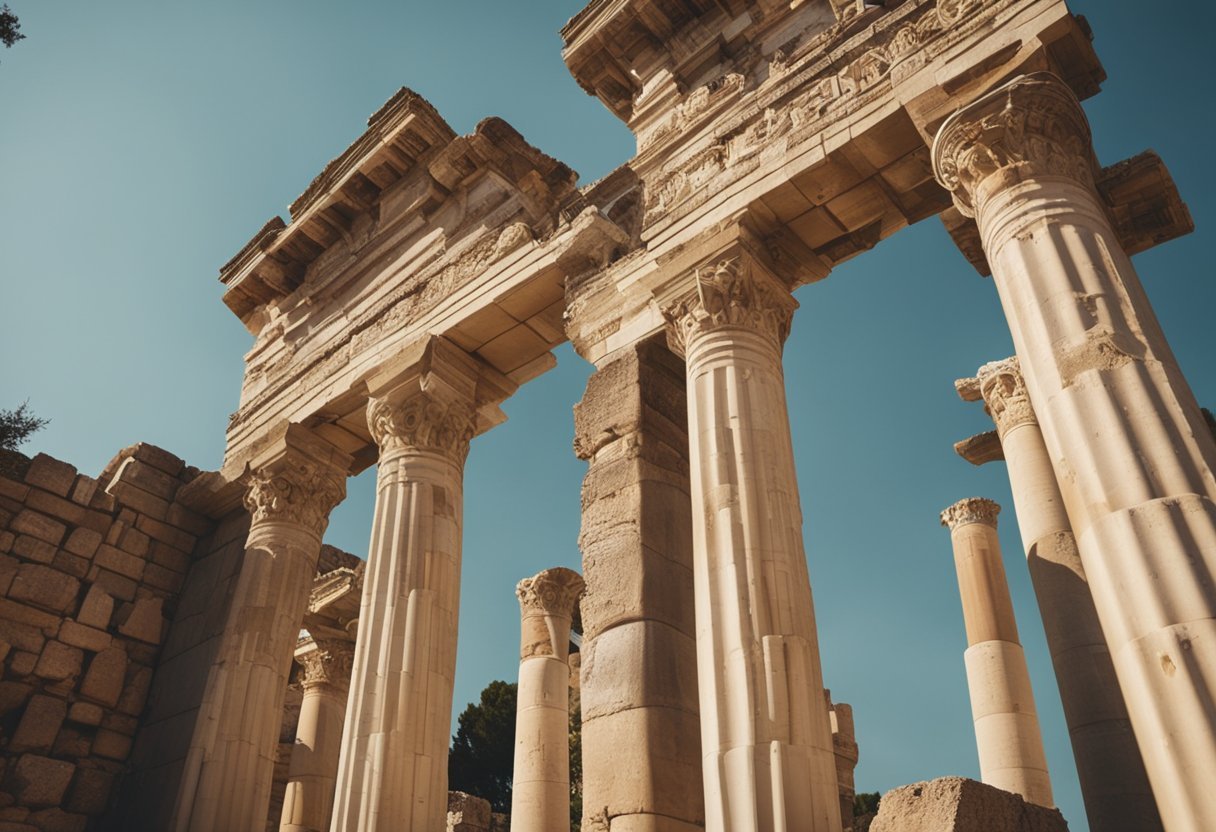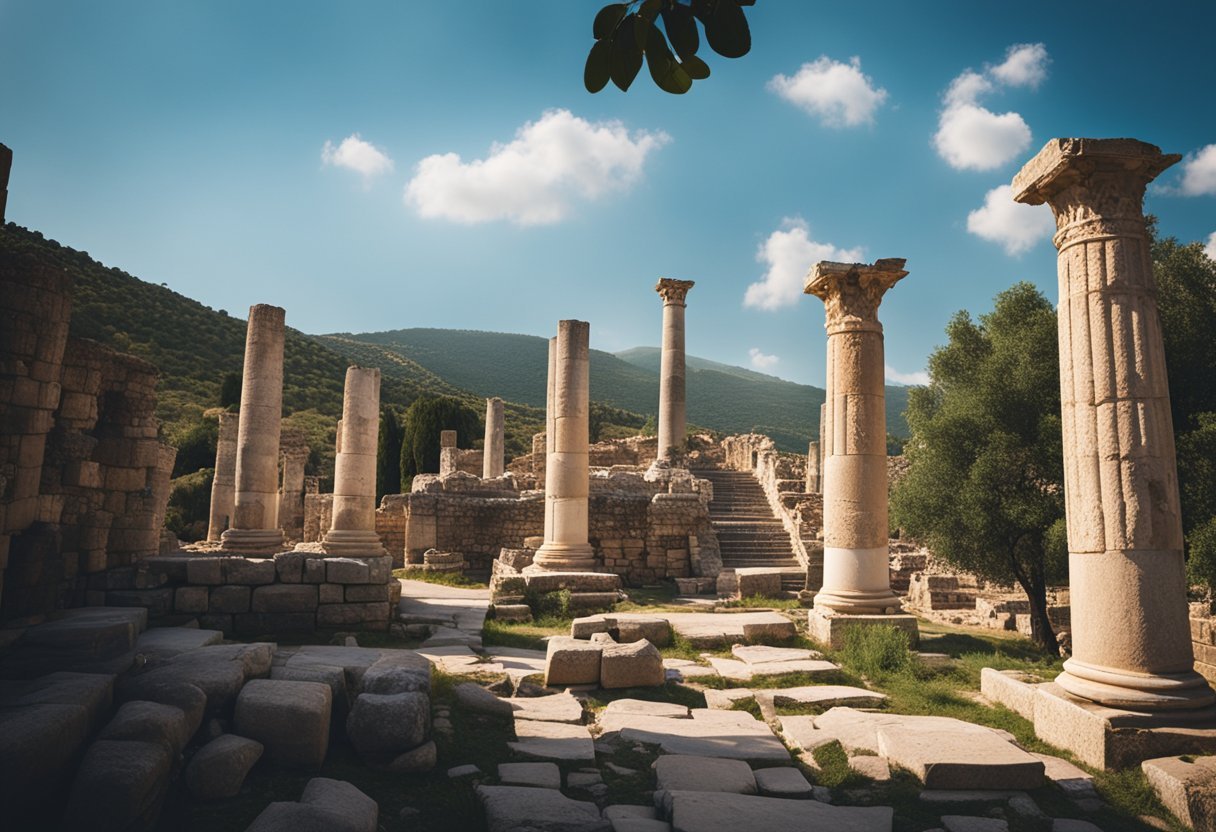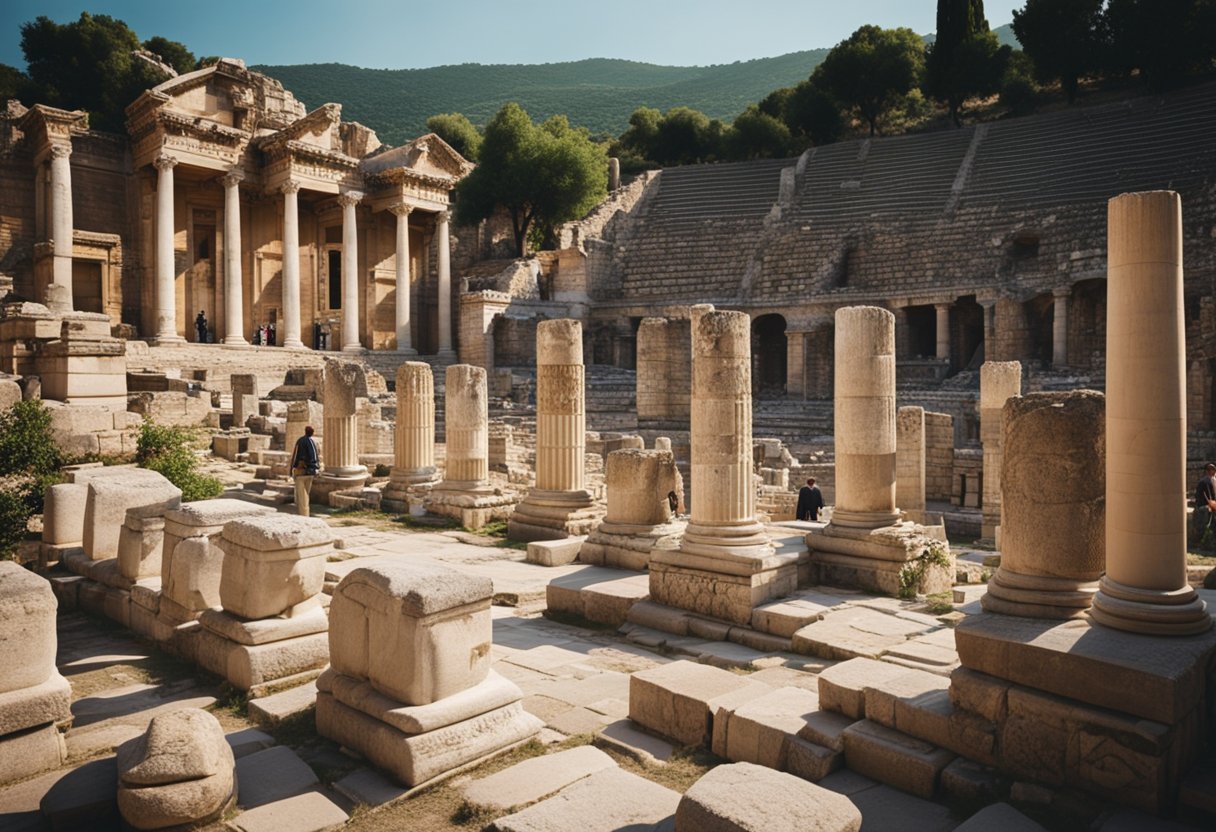Ephesus, a gem on the Turkish Aegean coast, offers a fascinating peek into ancient history. As one of the most significant cities of the Greek and Roman eras, it was a major port and bustling center of trade. What truly sets Ephesus apart are its remarkably well-preserved ruins, such as the Library of Celsus and the grand Amphitheater, drawing visitors from around the globe.
Visitors often feel transported back in time as they wander down ancient streets, where legends like the Apostle Paul once walked. Nestled near the contemporary town of Selçuk, Ephesus captivates with sights like the Temple of Artemis, one of the Seven Wonders of the Ancient World. For those keen on both history and beauty, exploring Ephesus is a must.
History of Ephesus

Ephesus, an ancient city on the western coast of Turkey, has a rich history that spans several millennia. From its mythic origins to its role in the Roman and Byzantine empires, Ephesus witnessed significant historical developments.
Ancient Beginnings
Ephesus is believed to have been established by Greek colonists around the 10th century BC. According to legend, the city was founded by the Amazons and named after their queen. Early settlers included the Carians and Lelegians.
Over time, Ephesus grew into an important city in Ionian Asia Minor. The area benefited from its strategic location near the Aegean Sea, facilitating trade and cultural exchange.
Notable early figures from Ephesus include the philosopher Heraclitus, who contributed to pre-Socratic philosophy, emphasizing constant change in the universe.
Roman and Byzantine Era
During the Roman period, Ephesus became a major urban center. It served as the capital of the Roman province of Asia, seeing extensive development and growth. The city boasted impressive architectural feats like the Library of Celsus and an expansive amphitheater.
Ephesus was also a significant religious center, home to the Temple of Artemis, one of the Seven Wonders of the Ancient World.
Under Byzantine rule, the city continued to thrive, though it faced several invasions and natural disasters that gradually impacted its prominence. The rise of Constantinople also diverted importance away from Ephesus.
Decline and Rediscovery
Ephesus began to decline in the later Byzantine period, primarily due to the silting of its harbor by the River Kaystros. This diminished its role as a key trade hub. Additionally, repeated invasions by various groups weakened the city.
By the 15th century, Ephesus was largely abandoned.
Rediscovery efforts in the modern era began in the 19th century, with archaeological excavations revealing much about its historical significance. Today, the ruins of Ephesus are a major tourist attraction, offering insights into its glorious past and the civilizations that once thrived there.
Visiting Ephesus Today

Ephesus, one of the most significant archaeological sites in Turkey, offers a mix of historical intrigue, impressive ruins, and captivating stories from ancient times. Visitors will explore celebrated landmarks such as the Temple of Artemis, the Library of Celsus, the Terrace Houses, and the Great Theater. Essential travel tips and etiquette will ensure a smooth visit.
Temple of Artemis
The Temple of Artemis, also known as the Artemision, used to be one of the Seven Wonders of the Ancient World. Although only a few columns remain today, its historical importance is undeniable. Tourists often marvel at the sheer scale of the ruins and imagine what it must have looked like in its prime.
The Temple is located just a short distance from the main entrance of Ephesus. It’s best visited early in the morning to avoid the afternoon crowds and heat. Keep your camera ready; the site offers many impressive photo opportunities. Remember to respect the site’s historical significance by not climbing on the ruins.
Library of Celsus
The Library of Celsus is one of Ephesus’s most famous structures. Built in 135 AD, it originally served as a mausoleum for Tiberius Julius Celsus Polemaeanus. The facade, with its intricate carvings and grand columns, has been meticulously reconstructed and is a highlight for many visitors.
This ancient library once housed nearly 12,000 scrolls. Standing before its façade, one can appreciate the detailed artistry that adorned its walls. Visiting in the early morning or late afternoon provides the best lighting for photography and more pleasant temperatures.
Terrace Houses
The Terrace Houses offer a glimpse into the luxurious lives of Ephesus’s elite. These well-preserved residential buildings are located on the slopes of Bulbul Mountain and contain intricate mosaics, frescoes, and marble floors. Each room tells a story of ancient domestic life.
Visitors can walk on glass walkways that hover above the remains, providing a unique perspective on ancient Roman interior design. Guided tours are highly recommended here to understand the significance of the artwork and architecture. The extra admission fee for the Terrace Houses is worth the rich insights they offer.
The Great Theater
With a seating capacity of 25,000, the Great Theater is one of Ephesus’s most impressive structures. It was initially built in the 3rd century BC and later expanded by the Romans. This massive amphitheater hosted dramas, gladiatorial contests, and political gatherings.
Acoustics in the Great Theater are remarkable. Even today, a speaker at the bottom can be heard by the audience seated at the top without any amplification. It’s an ideal spot for a short rest while imagining the vibrant events that once took place here.
Travel Tips and Etiquette
Ephesus opens daily from 8:00 AM with closing hours varying by season: 7:30 PM from April to October and 5:30 PM from November to March. The ticket office closes 30 minutes before the site does.
- Wear comfortable shoes and bring water.
- Sun protection is essential, including hats and sunscreen.
- Respect the ruins by not climbing or touching them unnecessarily.
- Consider hiring a guide or joining a group tour for richer historical context.
- Gauge time for each landmark to avoid rushing through the site.
A visit to Ephesus offers an incredible journey back in time, unveiling the layers of an ancient civilization through its remarkable structures and ruins.

